‘You’re beautiful, darling, and you always will be’: The extraordinary life of Francis Bacon’s muse
One of the artist’s many portraits of Henrietta Moraes, who was known as ‘the Queen of Soho’, is the highlight of a new show at the National Portrait Gallery. Alastair Smart revisits the wild life of a remarkable woman
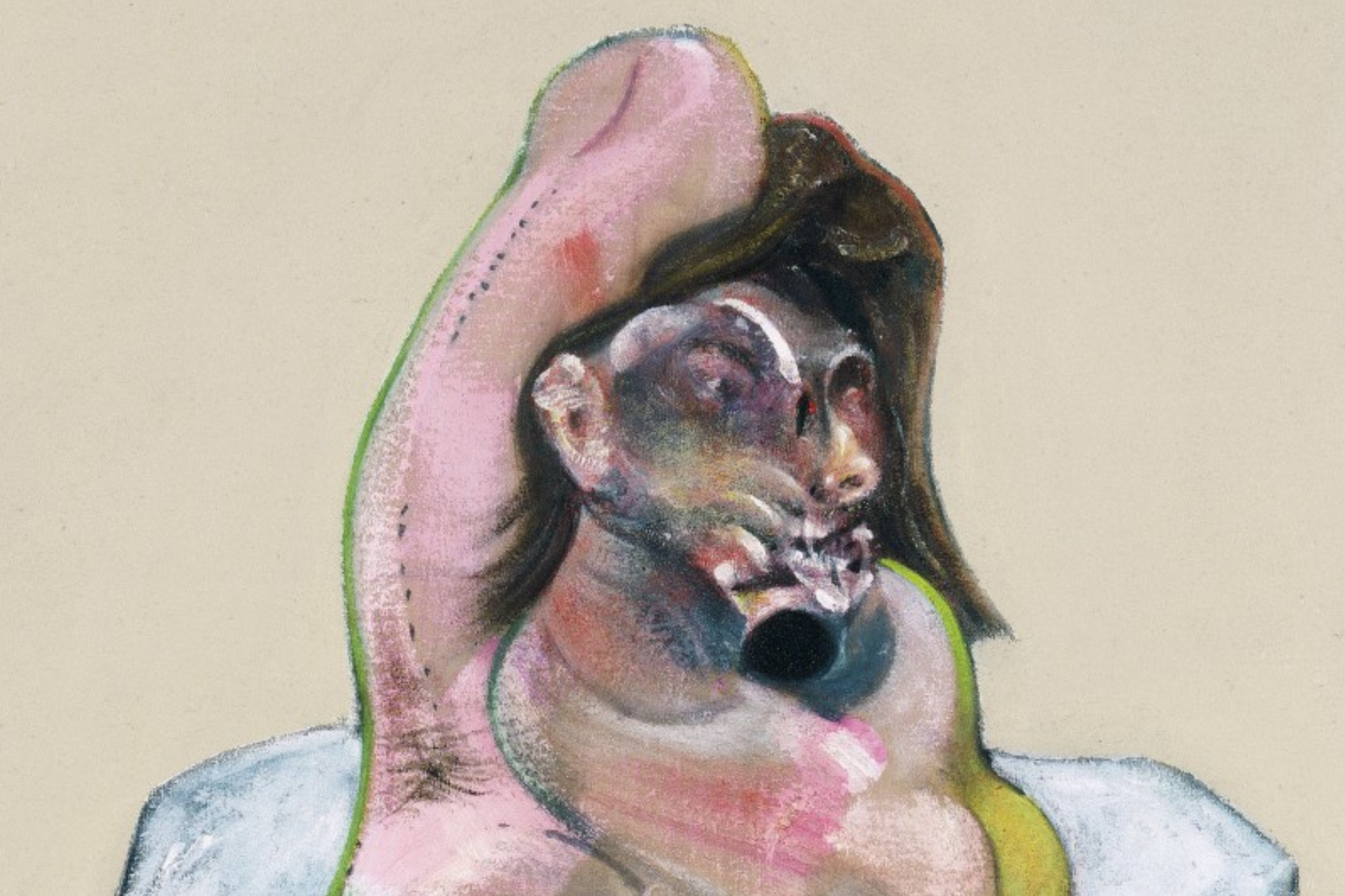
In the 1950s, while the rest of the United Kingdom remained shrouded in post-war austerity, the Soho area of London was an oasis of exotic pleasures. Upon entering its streets, one enjoyed European cuisine (rather than soggy sandwiches) and espresso coffee (rather than lukewarm tea). There was also a permissive attitude towards sex and alcohol in its bars, pubs and clubs.
Soho’s bohemian scene attracted major cultural figures such as Francis Bacon, Lucian Freud and Dylan Thomas – as well as Henrietta Moraes, a young bonne vivante in revolt against her strict convent upbringing. She had moved to London to attend secretarial college in South Kensington, but found the food at Wheeler’s oyster bar in Old Compton St and the champagne at the Gargoyle Club in Dean St more appealing. It wasn’t long before she earned the sobriquet “the Queen of Soho”.
Moraes and Bacon met in a bar in 1949, when the former was 18 and the latter around 40. They became close friends, and Moraes went on to serve as a frequent portrait subject for the artist.
Some 20 paintings of her by Bacon exist, and one startling example from 1966 is a highlight of the new exhibition at the National Portrait Gallery, Francis Bacon: Human Presence. It depicts Moraes lying naked on a bed, her face so distorted she’s barely recognisable.
The exhibition features portraits from across the artist’s career. Best known are his pictures of lovers such as Peter Lacy (a former fighter pilot) and George Dyer (a small-time crook), and of male friends such as Freud – in large part because of the inherent erotic tension. However, his portraits of women still have plenty to recommend them.
“I’d go anywhere and do anything at any time,” said Moraes late in life, when asked to explain her popularity in post-war Soho. She added that Bacon “exuded incredible energy” back then. “If there is a force field around people, his was 10 times as strong. [He was] very funny and very generous.”
The artist only began to paint Moraes several years after they met. His output in the 1950s was dominated by pictures of screaming popes and unfortunate animals. At the start of the following decade, he had a change of tack. One day in 1963, at The French House, a pub in Soho, he told Moraes (now in her early thirties) that he wanted to do some paintings of friends, and asked if she would like to participate.
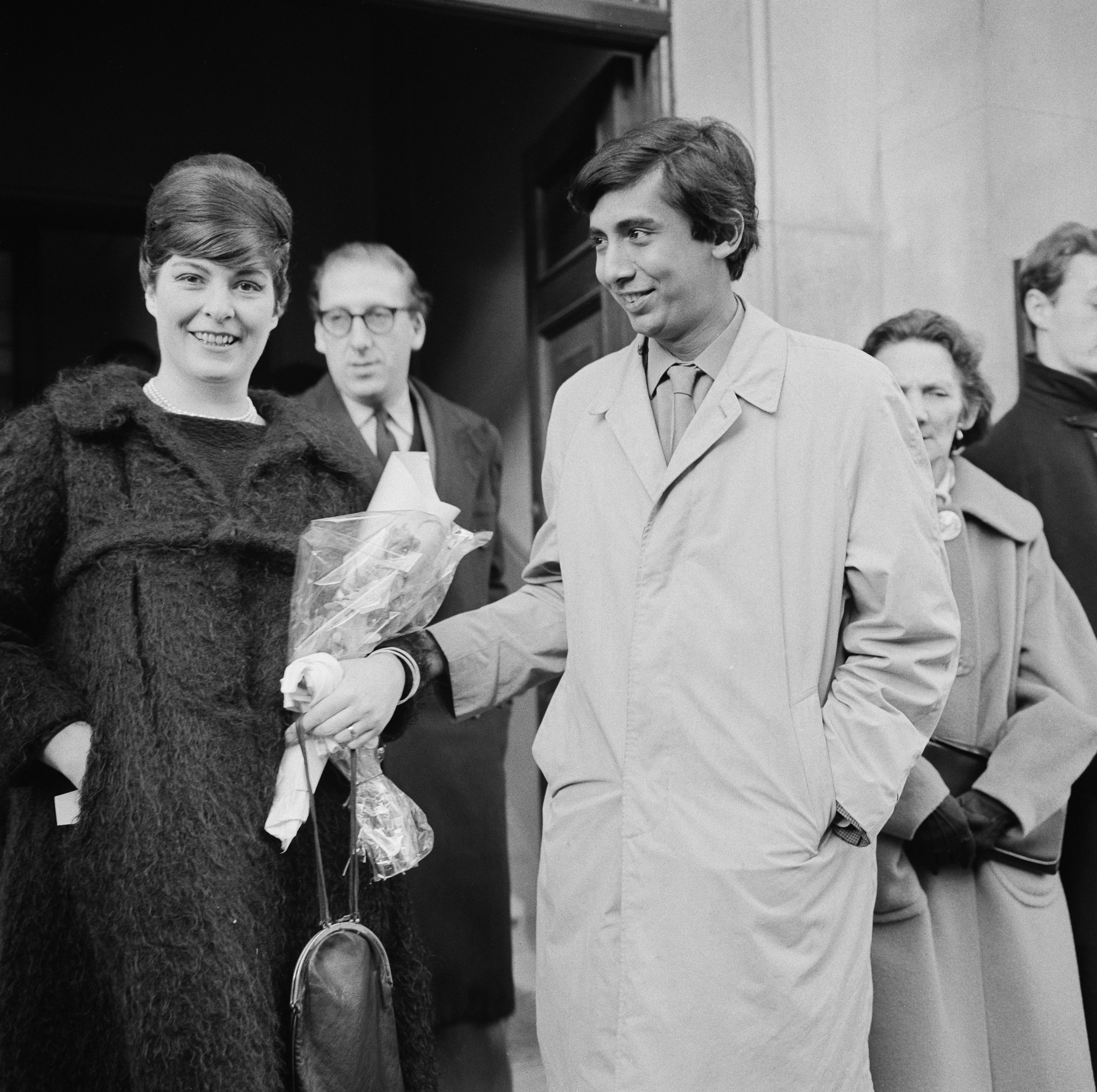
Initially, she was hesitant, as participation would entail posing nude. However, after a few drinks and reassurance from the artist (“You’re beautiful, darling, and you always will be, you mustn’t worry about that”), she agreed.
Bacon never liked portrait subjects to sit for him in person, so he organised for the photographer John Deakin to take a set of shots of Moraes naked on a bed. The shots proved a little too explicit for Bacon, who demanded a second set be taken. It was these photographs – along with Bacon’s memories of, and feelings about, Moraes – that provided the basis for his paintings of her, the last of which was completed in 1969. (In her autobiography, Henrietta, Moraes wrote that she had caught Deakin trying to sell copies of the first set of photos to some sailors in The French House. She bore him no ill will, though, as “he bought me a drink ... with the proceeds”.)
The reclining female nude has a long tradition in Western art history. Bacon admired The Rokeby Venus (1647-51) by Diego Velázquez, for example, a painting in the National Gallery on which the canvas under consideration here – 1966’s Henrietta Moraes – was loosely modelled. Witness the bent right arm, which in both pictures helps prop up the subject’s head.
Another reference point for Bacon was Jean-Auguste-Dominique Ingres’s Grande Odalisque (1814). However, where the Frenchman’s subject was a concubine in a plush harem, Moraes is seen in a decidedly unexotic, contemporary setting: in an empty room, on a mattress without a sheet on it.
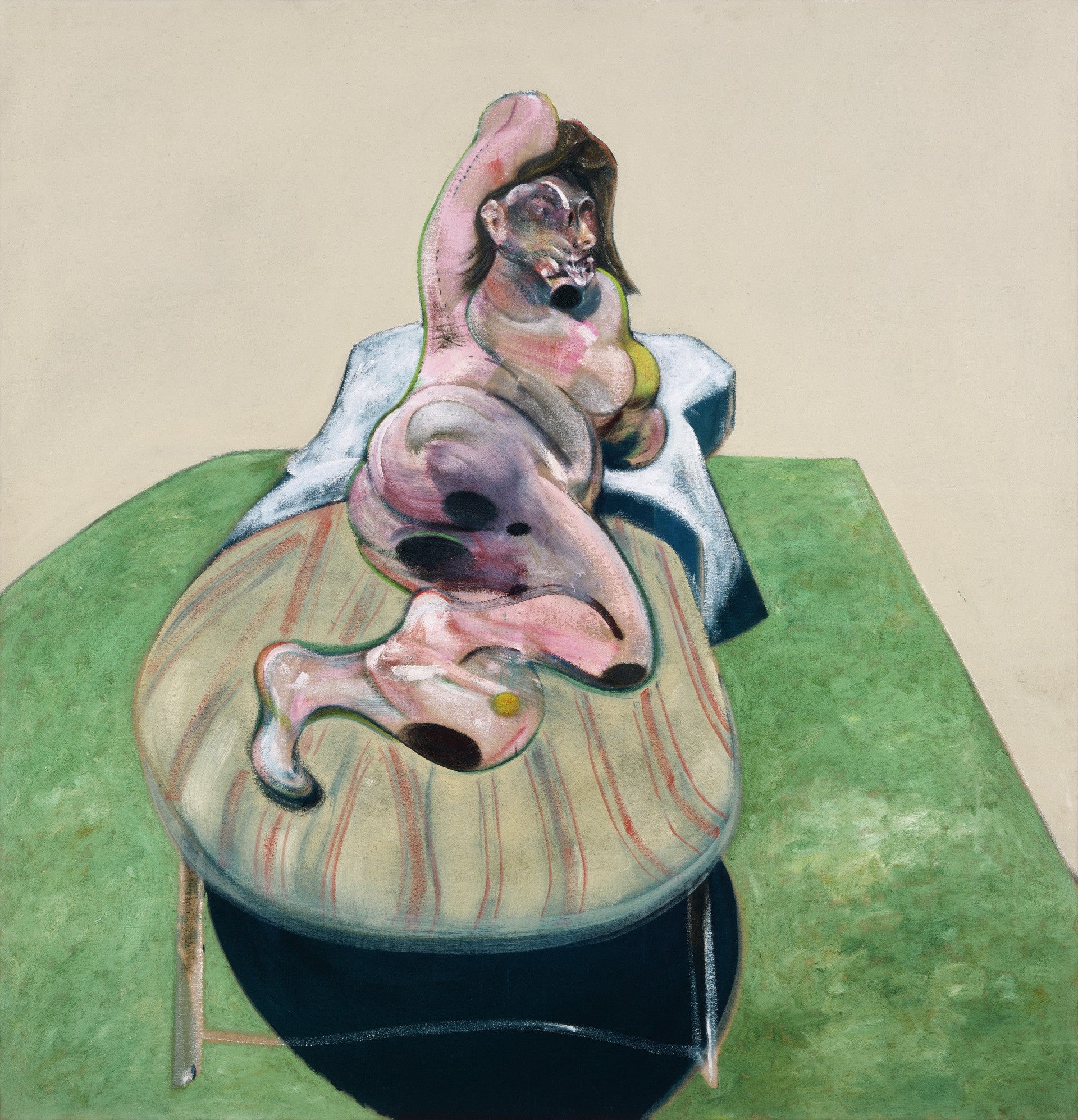
Moraes’s body – like the concubine’s – is in a serpentine shape, but in Bacon’s vision of her she looks less like a voluptuous object of desire than a carcass of meat. The viewer is confronted by a fleshy mass without much definition.
This blurry flesh, like the distorted face, is typical of Bacon’s approach to portraiture overall. Where portraits had historically been judged in terms of the physical resemblance to the person depicted, 20th-century artists such as Bacon and Picasso chose to represent subjects more radically, with faces often looking little like faces and bodies little like bodies.
“In painting a portrait,” Bacon said, “the sitter is someone of flesh and blood, [but] what has to be caught is their emanation.”
Moraes was a single mother (of two children) and working as an account manager in an advertising agency when she sat for Deakin’s photos. Her other jobs around that time included being a coffee bar manager and a cat burglar (the latter costing her three weeks on remand in Holloway Prison).
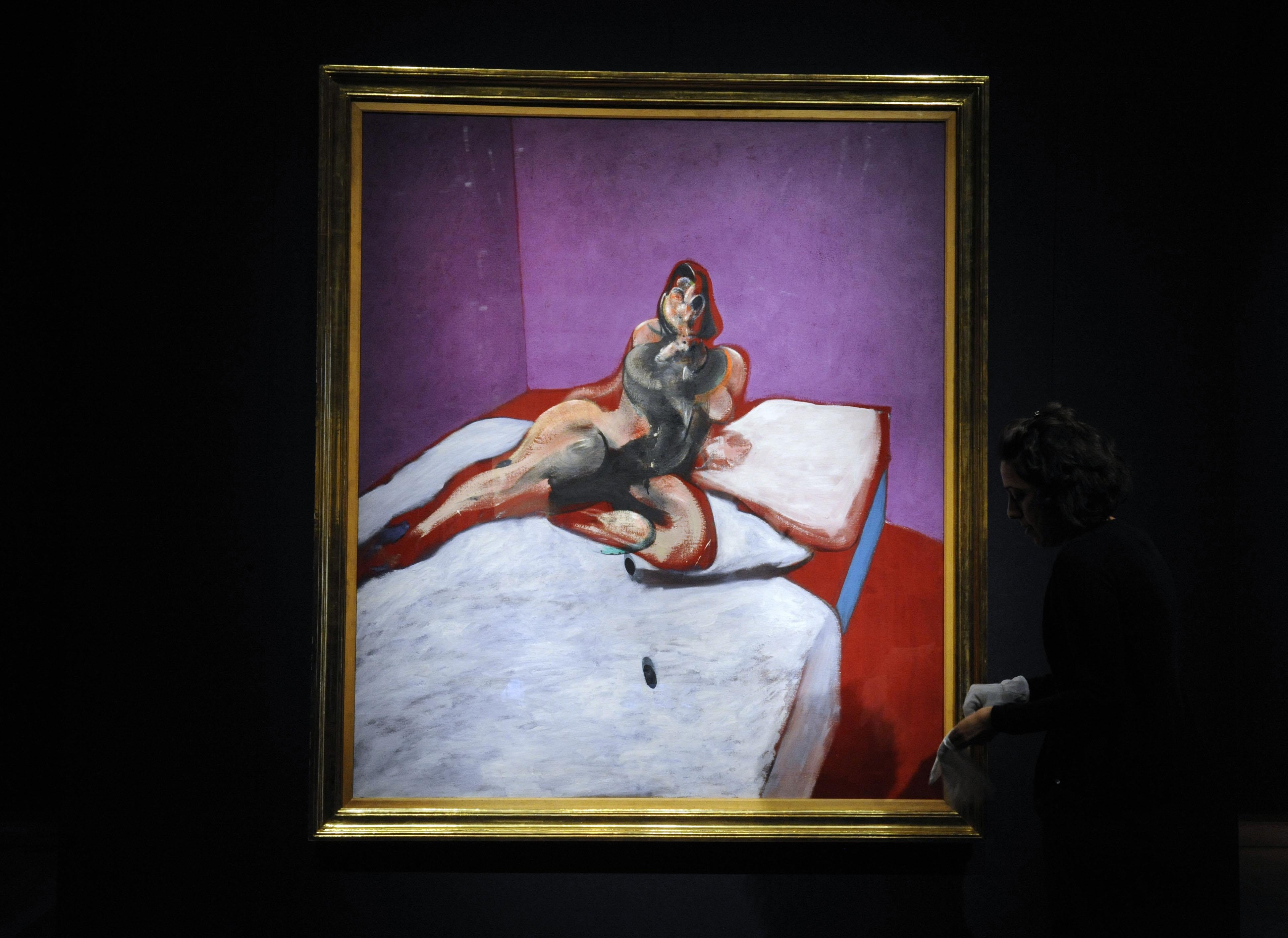
Moraes blamed her take-up of crime on her increasing dependency on drugs through the 1960s – something reflected in two of Bacon’s paintings of her, Lying Figure with Hypodermic Syringe and Version No. 2 of Lying Figure with Hypodermic Syringe. (Interestingly, these works suggest the use of heroin, purportedly one of the few drugs available at that time that she didn’t take.)
Moraes was married three times by the age of 30 – to a documentary filmmaker called Michael Law; to the actor Norman Bowler, who would go on to star in the long-running BBC cop show Softly Softly: Task Force and later as Frank Tate in Emmerdale; and to the poet Dom Moraes, whose surname she adopted. All three marriages ended in divorce.
She was also briefly a lover of Lucian Freud, who depicted her in a 1952 painting called Girl in a Blanket. According to her autobiography, the pair consummated their relationship in a Brewer Street basement “on the edge of an unwieldy sink”.
Moraes died in 1999, aged 67, the second half of her life having been much less wild than the first. She spent part of it as a gardener. Unsurprisingly, it’s the early years for which she’s remembered today – a period when she lived life to the full, free of inhibitions and heedless of social norms.
It makes sense, then, that Bacon would have thought to capture her “emanation” on canvas by representing her as a figure all but unidentifiable, a figure on the verge of disintegration.
‘Francis Bacon: Human Presence’ is at the National Portrait Gallery from 10 Oct 2024 to 19 January 2025; npg.org.uk
Join our commenting forum
Join thought-provoking conversations, follow other Independent readers and see their replies
Comments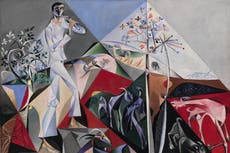

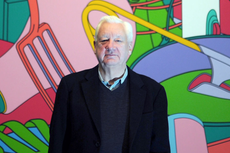
Bookmark popover
Removed from bookmarks